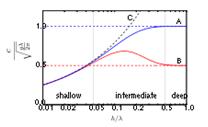
Urban Geography(Think Tank)
Meaning, scope and importance of Urban Geography Rural Urban Fringe Satellite Towns
Faculty: Science 2019 Sample Papers with Solutions Sr. No. Paper Name Question Paper Link Solution Link 1 Immunology, Virology and Pathogenesis Click Here Click Here 2. Cell Biology Click Here Click …
Faculty: Science 2019 Sample Papers with Solutions Sr. No. Paper Name Question Paper Link Solution Link 1 Plant Biotechnology Click Here Click Here 2. Genetic Engineering Click Here Click Here
Faculty: IT 2019 Sample Papers with Solutions Sr. No. Paper Name Question Paper Link Solution Link 1. Cloud Computing Click Here Click Here 2. Analysis & Design of Algorithm Click Here …
Faculty: IT 2019 Sample Papers with Solutions Sr. No. Paper Name Question Paper Link Solution Link 1. Java Technologies Click Here Click Here 2. Web Technologies Click Here Click Here 3. …
Faculty: IT 2019 Sample Papers with Solutions Sr. No. Paper Name Question Paper Link Solution Link 1. Discrete Mathematics Click Here Click Here 2. Programming in C & C++ Click Here …
Faculty: Science 2019 Sample Papers with Solutions Sr. No. Paper Name Question Paper Link Solution Link 1 Immunology, Virology and Pathogenesis Click Here Click Here 2. Cell Biology Click Here Click …
Faculty: Science 2019 Sample Papers with Solutions Sr. No. Paper Name Question Paper Link Solution Link 1 Plant Biotechnology Click Here Click Here 2. Genetic Engineering Click Here Click Here
Faculty: IT 2019 Sample Papers with Solutions Sr. No. Paper Name Question Paper Link Solution Link 1. Cloud Computing Click Here Click Here 2. Analysis & Design of Algorithm Click Here …
Faculty: IT 2019 Sample Papers with Solutions Sr. No. Paper Name Question Paper Link Solution Link 1. Java Technologies Click Here Click Here 2. Web Technologies Click Here Click Here 3. …

Meaning, scope and importance of Urban Geography Rural Urban Fringe Satellite Towns




Business Budgets and Budgeting Types of Budgets Business Forecasting Cash Budgeting Budgetary Control Project Planning and Feasibility Study
Business Budgets and Budgeting
Types of Budgets
Business Forecasting
Cash Budgeting
Budgetary Control
Project Planning and Feasibility Study

Sales Promotion Recruitment, Selection & Motivation Sales Forecasting, quotas & Territories
Sales Promotion
Recruitment, Selection & Motivation
Sales Forecasting, quotas & Territories

Newton Raphson Method Iteration Method Gauss Seidal Gass Jacobi Euler Method Runge Kutta Method Interpolation
Newton Raphson Method
Iteration Method
Gauss Seidal
Gass Jacobi
Euler Method
Runge Kutta Method
Interpolation

This article is about scattering of waves on a water surface. For different types of scattering, see Scattering (disambiguation). In liquid progress, scattering of water waves by and large alludes to …
This article is about scattering of waves on a water surface. For different types of scattering, see Scattering (disambiguation).
In liquid progress, scattering of water waves by and large alludes to recurrence scattering, which implies that floods of various wavelengths go at various stage speeds. Water waves, in this connection, are waves engendering on the water surface, and constrained by gravity and surface strain. Thus, water with a free surface is by and large thought to be a dispersive medium.
Surface gravity waves, moving under the compelling by gravity, engender quicker to increase wavelength. For a given wavelength, gravity waves in more profound water have a bigger stage speed than in shallower water. Interestingly with this, hairlike waves just constrained by surface strain, proliferate quicker for shorter wavelengths.
Other than recurrence scattering, water waves additionally show adequacy scattering. This is a nonlinear impact, by which influxes of bigger abundancy have an alternate stage speed from little plentifulness waves. On the off chance that the wave speed depends just on the physical properties of the medium (i.e., the flexible and dormancy properties of a mechanical medium, or the relative penetrability and permittivity for EM waves) then the wave pace is a steady, free of recurrence. Such a medium is known as a non-dispersive medium and waves going through this medium will keep up a steady shape. This is delineated by the dark wave beat in the movement at left. The beat is a Gaussian capacity, containing various frequencies. Subsequent to the wave velocity is consistent, all frequencies go at the same pace and the beat keeps up steady shape.
Be that as it may, there are numerous samples of dispersive media where, for different reasons, the wave speed relies on upon the recurrence of the wave. The blue wave beat in the liveliness is the same Gaussian capacity as the dark heartbeat, comprising of countless segments included. Be that as it may, now the wave speed relies on upon recurrence, with higher frequencies voyaging speedier than lower frequencies. Accordingly, the wave beat spreads out and changes shape as it ventures.
The “middles” of both wave beats go at the same velocity. This prompts the idea of a “gathering speed” which is the pace with which the vitality conveyed by the wave ventures. The gathering speed is the same for every wave beat.

A mood is an emotional state, an angry, irritable, or sullen , a temporary state of mind or feeling.Moods differ from emotions, feelings or affects in that they are less specific, …
A mood is an emotional state, an angry, irritable, or sullen , a temporary state of mind or feeling.Moods differ from emotions, feelings or affects in that they are less specific, less intense, and less likely to be triggered by a particular stimulus or event. Moods are typically described as having either a positive or negative valence.
Our mood can play a significant role in how we live our lives. When we are happy, we tend to concentrate on the good things and ignore the negative aspects of things that happen around us. Similarly, when we are sad, we may be unable to think of anything but those negative aspects, to the extent that we may avoid the people or the activities that would help to mitigate the sadness and banish the mood.
Most of us experience quite intense moods in response to the events that occur in our lives. Some people, however, experience such dramatic ups and downs that they find it difficult to enjoy a good quality of life. These dramatic swings in mood may be extreme responses to external events, or they may have their origin in internal changes in the body’s chemistry.

Mood disorders
When mood swings are problematic, it could signify the presence of a mood disorder. There are several mood disorders, among them chronic depression, major depressive disorder and manic–depressive disorder (sometimes called bipolar disorder). The first two are characterized by periods of depressed mood interspersed with periods of normal mood. The third encompasses both downswings and upswings, and in the extreme these can take the form of cycles of very severe depression changing very rapidly to mania.
Symptoms of depression may include:
• insomnia (or increased sleep)
• reduced (or increased) appetite
• feelings of worthlessness
• recurrent thoughts of death



